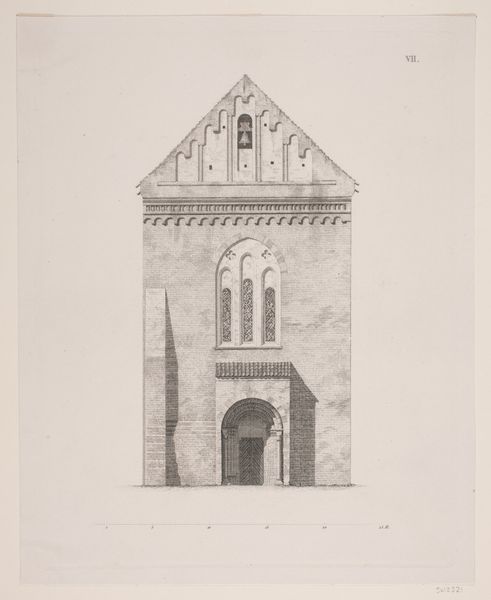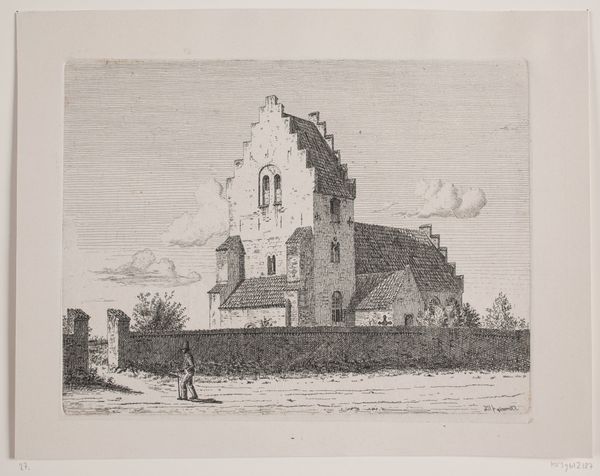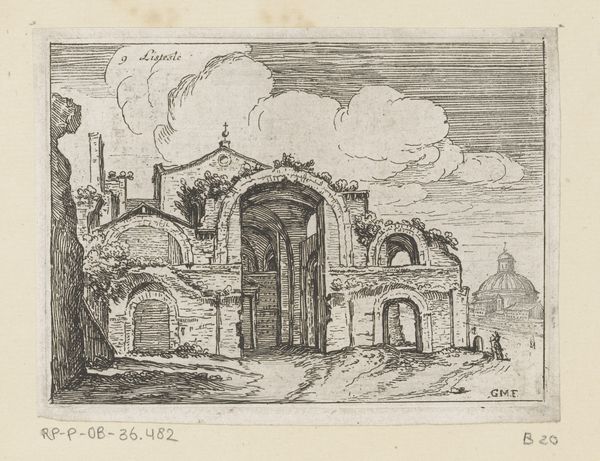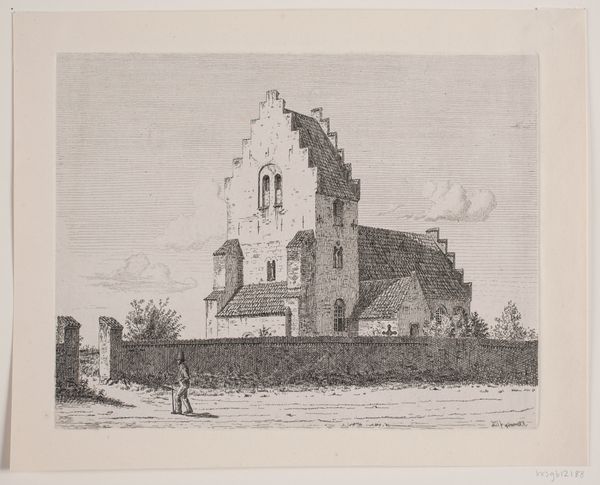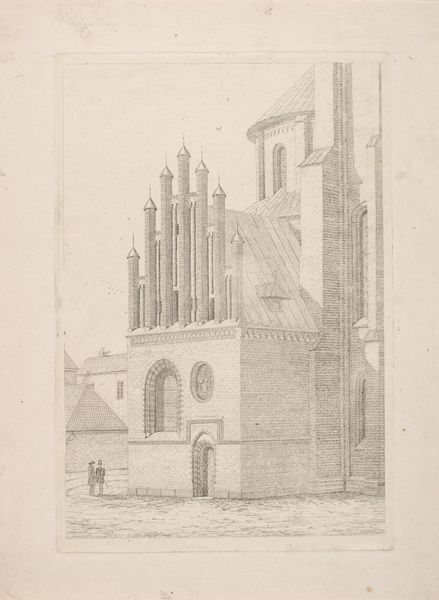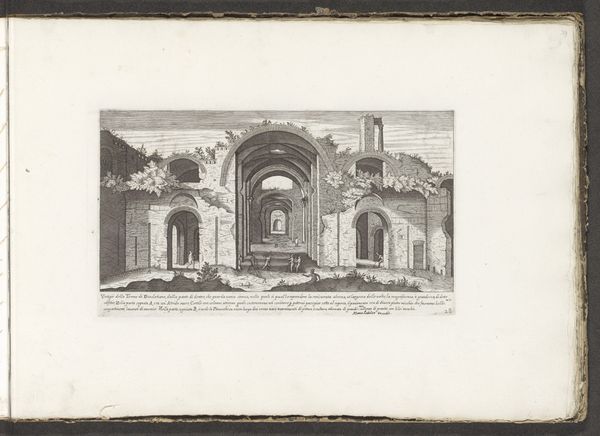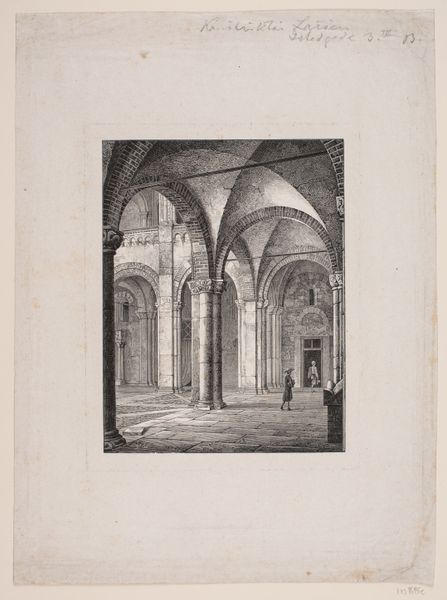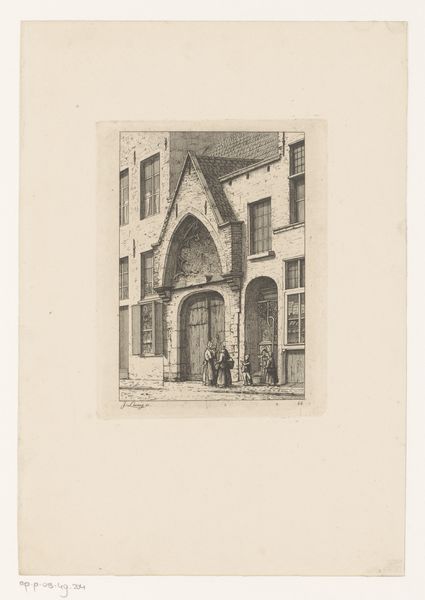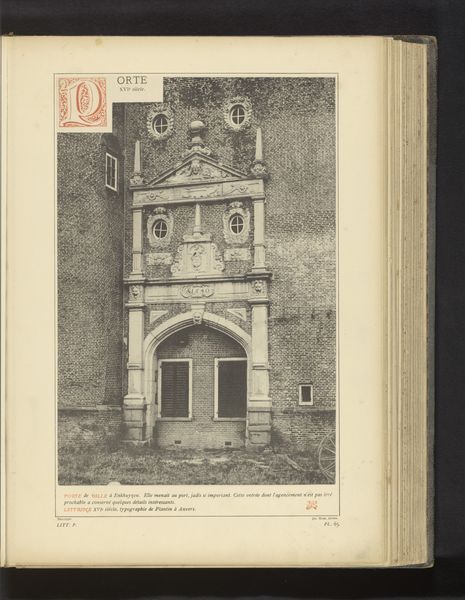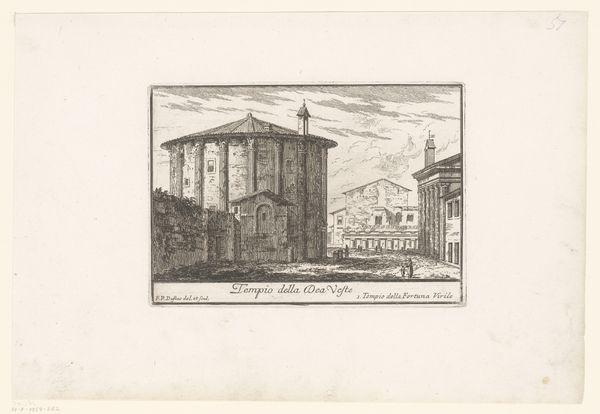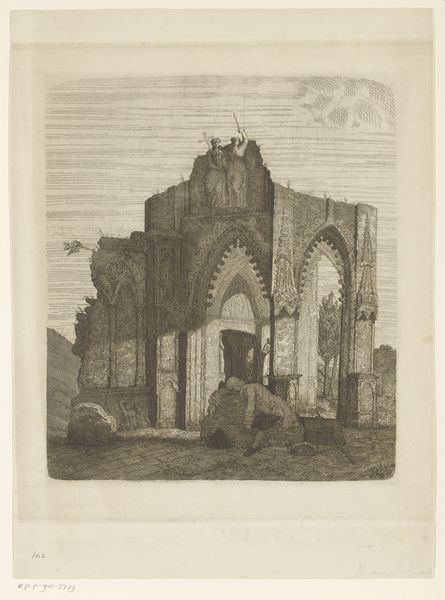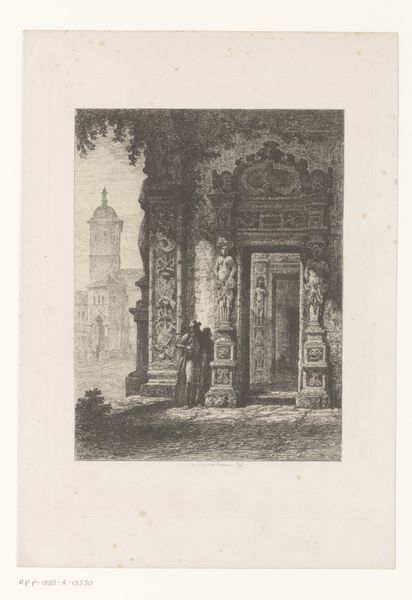
print, etching, architecture
# print
#
etching
#
landscape
#
etching
#
romanticism
#
line
#
architecture
#
realism
Dimensions: 156 mm (height) x 108 mm (width) (plademaal)
Editor: So, this etching from 1850 by Jacob Kornerup, called "Oluf Mortensen våbenhus ved Roskilde Domkirke", showcases the Roskilde Cathedral armoury. I'm immediately struck by its incredible detail, despite it being, essentially, lines on paper. It’s almost ghostly, wouldn't you say? What catches your eye? Curator: Ghostly... yes, a lovely term. It resonates, doesn't it, with the way memory itself is etched – less a clear photograph, more a collection of precise lines and shadows suggesting a place, a time. For me, it’s the perspective Kornerup has chosen, placing us slightly off-centre, as if we’ve just stumbled upon this scene. Are we meant to feel like onlookers, pondering the weight of history within those walls? Editor: I suppose so. The lone figure by the church almost fades into the architecture, a silent witness. The print's lines almost give it a photographic realism in a way but softer... What sort of statement do you think Kornerup was trying to make about Romanticism and Realism clashing here? Curator: Now that’s the intriguing dance, isn't it? Romanticism loved ruins, hints of the past, stirring up feelings. Yet, here’s Kornerup documenting the våbenhus with a realist's precision, its stones and angles faithfully rendered. Perhaps he's asking: can we truly understand the grand narratives of Romanticism without grounding them in the real, tangible world? It feels like a visual tug-of-war. What do you make of the heavy shading next to areas with minimal mark-making? Editor: That heavy shading makes you feel like you're squinting almost - like the sun is reflecting harshly on certain angles while other parts are in shadows. That feels very true to life - very real. So what does the blend of styles communicate to you? Curator: The dance between styles suggests a search, a negotiation. Kornerup is grappling with how to portray not just what he sees, but what it *means* to see it. The precise lines of the architecture hold the weight of history, while the composition, the play of light and shadow, evokes the *feeling* of being there, contemplating that history. I wonder, do you feel a connection to this place simply by looking at it? Editor: I think I do. It definitely makes me want to visit Roskilde Domkirke - to almost find that figure standing in the distance and view what they're viewing in this work of art. I’ll think differently about etchings now, seeing not just lines but memories. Curator: Excellent, to hear. Etchings - memories held captive on a plate and freed by ink. Just as poetry etches itself upon the soul, these lines give breath to a space suspended in time.
Comments
No comments
Be the first to comment and join the conversation on the ultimate creative platform.
